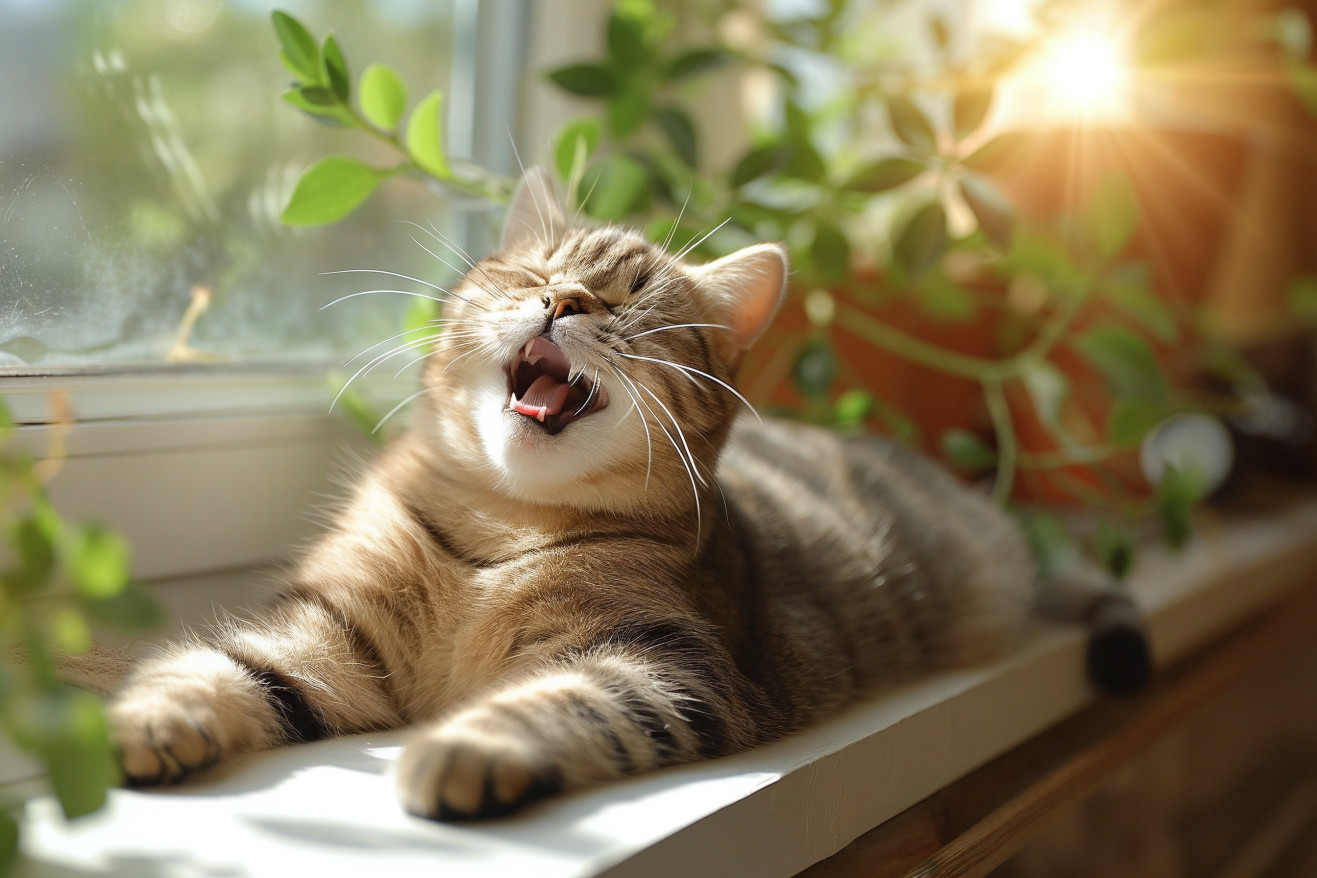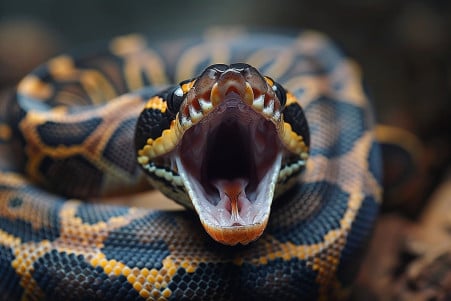Why Do Cats Yawn? Unraveling the Feline Yawn Mystery
2 February 2024

While watching a cat yawn may not seem particularly exciting, there’s a lot more going on behind the scenes than you may realize. Cats yawn for many of the same reasons people do, including tiredness and boredom.
They may also yawn as a sign of happiness or to help them cope with stress. That said, if your cat is yawning a lot, it may be a sign of an underlying health problem that needs to be addressed by a veterinarian.
This article will take a deep dive into the many reasons why cats yawn, drawing from a variety of scientific fields, including veterinary science, neurology, ethology, and animal behavior. By the end, you’ll have a good understanding of the physiological reasons cats yawn and what their yawns may be trying to tell you.
Why do cats yawn?
The Yawn: What It Really Means
When cats yawn, which is an involuntary reflex that involves opening the mouth wide and taking a deep breath, it turns out it’s not just a sign of sleepiness. According to Cats.com, yawning is a complex behavior that can signal everything from being tired to getting ready to go to sleep to being a stress-relieving action. Cats.com also says that yawning may indicate a cat is comfortable and happy in its environment.
Vetstreet says that yawning, which is thought to help regulate the body’s essential respiratory gases, can help cats get rid of excess carbon dioxide and take in more oxygen, which can help the body maintain the right balance of oxygen. PetHelpful agrees with this assessment and says that cats may yawn as a reflex to help balance oxygen and carbon dioxide levels, which can help them stay more alert and aware.
On the other hand, when cats yawn too much, it can be a sign of a problem. According to Cats.com, excessive yawning can be a sign of oral pain or other medical issues.
Pet owners should be aware that excessive yawning, especially if it’s accompanied by drooling or bad breath, can be a sign of a medical issue that needs to be addressed by a veterinarian. Knowing this information can help us better understand our cats’ well-being.
Following the Yawn: A Look at Evolution Across Species
Yawning is a behavior that has deep evolutionary roots and is common among vertebrates. It has both communicative and physiological functions. An article in Human Evolution suggests that yawning may be a way to influence the behavior of other members of the same species, which would mean that it has a social function. In addition, yawning may have direct physiological benefits for the yawner, such as increasing arousal and improving physiological functions.
The fact that yawn contagion is so much more common in humans than in other animals has led to speculation about the communicative function of yawning. A study of wild spotted hyenas in Behavioral Ecology and Sociobiology even suggests that contagious yawning may help with behavioral synchronization, a concept that can be extended to feline yawning and the social behavior of their ancestors.
In addition, PubMed notes that contagious yawning may be a measure of social cognition, which suggests that cats may be able to show empathy, just like primates.
It’s possible that shared yawning evolved as a way to help groups of animals maintain vigilance and social cohesion, essentially serving as a social glue. This history helps explain the complex yawns of our feline friends and provides a basis for further research into the complex neurological and respiratory processes that underlie this behavior.
The Science of Cat Yawning: Where Neurology Meets Respiratory Science
Yawning, while it may seem simple, is a neuropharmacological wonder that involves a complex interplay of neurotransmitters, according to a paper on the neuropharmacology of yawning published in PubMed.
Dopamine, excitatory amino acids, acetylcholine, and a number of other compounds all increase the likelihood of yawning, and they all come together in the hypothalamus, an area of the brain that is important for this physiological response.
The inextricable connection between yawning and the brain is taken even further in a paper published in Communications Biology, which introduces the brain cooling hypothesis. According to this idea, the act of yawning is a way to help regulate the temperature of the brain, and the length of yawns may even be related to the size of the brain and the number of neurons in it.
Yawning has a significant effect on airway physiology, which may help ensure proper oxygenation, a process that is important for maintaining wakefulness and brain function. It starts with a deep breath, which causes the muscles to move in a way that opens up the airway, allowing for more air to be taken in.
Knowing the complex neurology and physiology behind why cats yawn helps us better understand their biological processes, and it may even mean that these behaviors can be a sign of their overall health.
What Cat Yawns Can Tell You About Your Cat’s Health
While a cat’s yawn is often a sign of comfort, it can also be a sign of an underlying health issue. For example, Cuteness explains that cats may yawn more frequently if they have feline stomatitis, an inflammatory condition that affects the mouth.
In this case, cats may yawn more often to try to alleviate the discomfort in their mouths. If a cat is yawning more than usual and is also drooling and has bad breath, this may be a sign that they need to see a vet.
In addition, Great Pet Care notes that excessive yawning can be a sign of dental issues, such as oral ulcers and resorptive lesions, which are painful and can cause a cat to lose their appetite. Meanwhile, Hepper points out that in addition to dental issues, ear problems, such as otitis externa, which is an infection that causes ear pain, head shaking, and discharge, can also cause a cat to yawn more often.
This means that it’s important to pay attention to how often your cat yawns, as an increase in yawning may be a sign of an underlying health issue. If a cat is yawning excessively or if their yawning is accompanied by other symptoms, it’s important to take them to the vet.
By doing so, you can make sure that you’re meeting your cat’s needs by keeping them healthy while also making sure that you’re meeting their needs by understanding their normal behavior and the things that they need to be happy and healthy.
The Impact of the Environment on Cat Yawning
The environment in which our cats live can have a big impact on how often and why they yawn.
For example, environmental enrichment, which includes things like toys and perches, can help cats express a wider range of natural behaviors, which in turn may affect how often and in what contexts they yawn.
On the other hand, stress, which can be caused by a lack of environmental enrichment, can lead to an increase in yawning as a stress response, as noted in a study in PMC. When cats yawn to communicate, it may be a sign of their stress in a high-stress environment.
A study in PMC found that indoor living and the resulting confined spaces can lead to significant changes in feline behavior, including yawning. The lack of space that comes with indoor living can cause stress in cats, which can lead to an increase in yawning as a way to cope with the stress of their environment.
The social environment, which includes interactions with both humans and other animals, also has a big impact. Positive human-animal interactions, as described in a study in PMC, can reduce stress and may lead to a normalization of yawning behavior.
This complex interplay between internal physiological responses and external factors, including the environment, emphasizes the complex nature of cat yawning. Recognizing the influence of both the physical and social environment is important for understanding and promoting the welfare and natural behaviors of our pet cats.
What Does It Mean When a Cat Yawns? A Look Back at the Whiskered Whispers Series
In our exploration of the feline yawn, we have come to see that this seemingly simple behavior is actually a complex combination of physiological and communicative processes.
We have seen that spontaneous yawns are a form of non-verbal communication that can tell us a lot about a cat’s internal state, from how tired and comfortable they are to how well their stress relief mechanisms are working. The details of brain function, airway physiology, and neurotransmitter activity have shown us that there is a lot going on in a cat’s body every time they yawn.
In our look at evolutionary origins, we have seen that yawning may have had important social and group alertness functions for our ancestors, and while these may not be as important for today’s domestic cats, they still have an impact. We have also seen that cats yawn excessively when they are experiencing health problems, especially oral health problems, which shows the importance of pet parents paying close attention to their cats.
We have also seen that environmental factors, from the layout of a cat’s home to the way they interact with their humans, are important in determining how often cats yawn. This shows how important a cat’s environment is to their well-being.
In the end, it’s clear that every yawn, with its many layers and meanings, is a reflection of a cat’s overall health and happiness, and as such, it deserves to be understood and appreciated.


